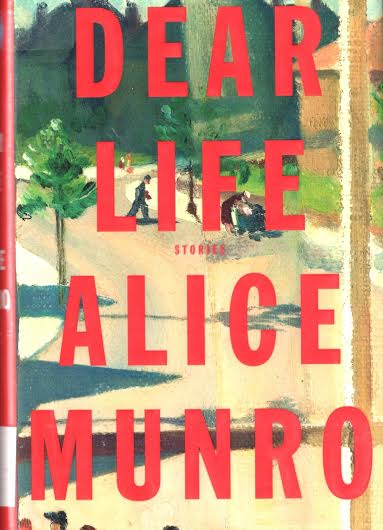Over the holidays, I had some time to catch up on reading, and Alice Munro’s Dear Life was first on my queue. Until very recently, I considered myself a decided non-fan of Munro’s. I’m not even sure what that prejudice was about: maybe reading “How I met My Husband” in school at some point? I vaguely remember thinking it too “Canadian,” or some other bunk criticism—basically, it was too familiar to be exotic and therefore unworthy my very matoor high school time. Well, with her recent Nobel Prize for Literature coupled with the fact that I’m living in a foreign country where there are fewer English books and where Dear Life happened to show up under the Christmas tree, it seemed like the universe was willing me to give Munro another try. The result? You can pretty much paint me ivory and call me Elizabeth Bennett, ’cause my unfounded anti-Alice prejudice had apparently been keeping me from discovering a new literary love all-along!
For anyone else out there who, like me, needs more convincing than her litany of awards—including three Giller Prizes, the Man Booker International Award for her lifetime body of work, and the above-mentioned Nobel Prize; or her international reputation—she has been called “the Chekov of our time,” people!—here are a few more reasons to stop dawdling and pick up a Munro, already.
Complex female characters!
Dear Life contains a plethora of truly complex women, who in many cases, make life-shattering mistakes. A little girl refuses to seek help in a moment of crisis; a teacher accepts the proposal of a man she hardly knows; a woman allows herself to be blackmailed for the sake of love. The characters don’t behave the way you want them to, but instead with all the humanity and chaos of real human beings, reminding me at times of what I love about Girls, or Sheila Heti’s How Should a Person Be. It’s thrilling to read any character that seems to think and act and feel the way we do in life—doubly thrilling that most of these characters are women.
Twists and Turns!
As with the characters, the stories in Dear Life are also complex; they are especially challenging structurally, often leaping forward and backward in time. They don’t follow a conventional story arc, and the twists and turns within are wonderfully unpredictable—not so much in an M. Night way, but in a way that echoes the natural ambiguities of life.
I’d even go so far to say that I found this nonlinear style empowering—by having no right path or necessarily moral ending to many stories, it seems to suggest that there is no one “good” way to live one’s life, but only a collection of life experiences, which make up the life one has lived. At the beginning of a New Year, that notion seems like an especially potent one.
Multigenerational Appeal!
At 82, it is clear in Munro’s writing that she has no shortage of wisdom and life experience, yet her written voice seems so connected with youth—in fact, the selections in Dear Life that are blatantly autobiographical all feature her as a young girl. She writes from the point of view of (mostly) women of all ages, and often from the point of view of one woman, at many ages. Her voice is at once vital, intimate, wise, and non-judgmental, like a combination best friend/cool grandma.
Capital-I Important!
But actually. With her Nobel Prize for Literature, Munro became the first Canadian Woman to receive such an honor, and she did so by writing predominantly about the experience of Canadian women. Represent.
So if you haven’t already, run-don’t-walk to your nearest book store/ library and check-out (LOLOL library pun!) Dear Life, or any one of Mrs. Munro’s 14 anthologies. These selections—available for free online—also seem like a good place to start. And for those already in the know, feel free to comment below on your Munro faves. Together, let’s delve into and celebrate the work of this Canadian treasure.



 Follow Us On Instagram
Follow Us On Instagram
